#Ghent altarpiece
Text

A new beer label illustration for a collab between Heirloom Rustic Ales and Ivory Bill! Inspired by one of my all time favorite paintings, the Ghent Altarpiece.
#illustration#beer label#lamb#sheep#Ghent altarpiece#artists on tumblr#jessica roux#jessicaroux#nature#floral
104 notes
·
View notes
Text

Sydney Sweeney
God the Father (detail), right panel of the Ghent Altarpiece. Jan van Eyck (Netherlandish, c. before 1390 - 1444). Ghent, Belgium.
#fangledeities#sydney sweeney#jan van eyck#goddess#enthroned#Ghent altarpiece#mash up#god the father#fashion photography#pinup#lingerie#glamor photography
71 notes
·
View notes
Photo
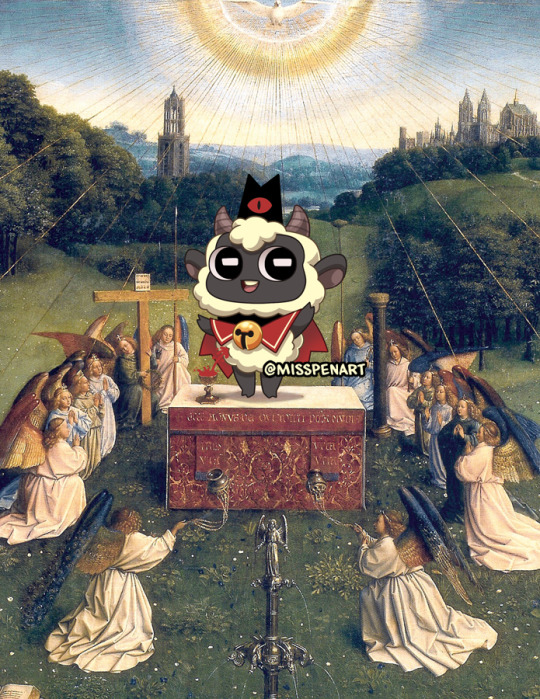
All Hail. 🍷🐑🩸
60 notes
·
View notes
Text

Adoration of the Mystic Lamb (Ghent Altarpiece) by Hubert van Eyck and Jan van Eyck, 1420s-1432.
#classic art#painting#jan van eyck#hubert van eyck#flemish artist#15th century#renaissance#christian art#ghent altarpiece#lamb of god#adoration#people#angels#fountain#outside
20 notes
·
View notes
Text







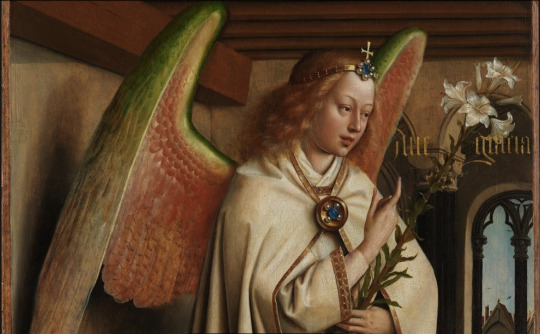
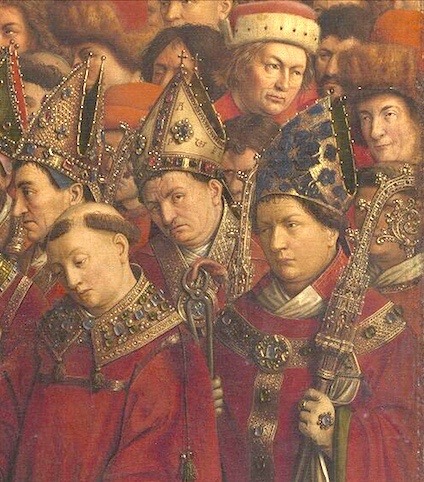
details in the ghent altarpiece, completed in 1432
#ghent altarpiece#adoration of the mystic lamb#jan van eyck#hubert van eyck#northern renaissance#dutch and flemish renaissance#netherlandish art#catholic imagery#catholic art#st bavo’s cathedral#ghent belgium#altarpiece
87 notes
·
View notes
Text
Seriously, Belgium trip Anon, if you don't go to Ghent to see the Ghent Altarpiece I will be so very disappointed in you. (lol)


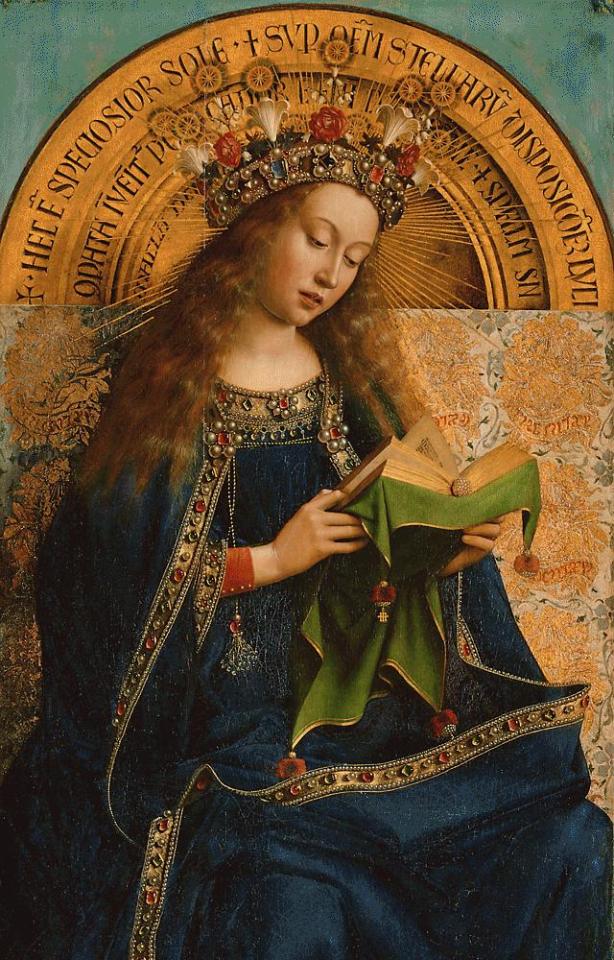
Jan van Eyck, Ghent Altarpiece (Adoration of the Mystic Lamb), mid 1420s-1432, oil/panel (St Bavo Cathedral, Ghent)
Once again, a masterpiece that had to be rescued from Nazis:

Dismantled Ghent Altarpiece being found in Altaussee salt mine, 1945
26 notes
·
View notes
Text

Ghent Altarpiece - Hubert and Jan van Eyck
3 notes
·
View notes
Photo

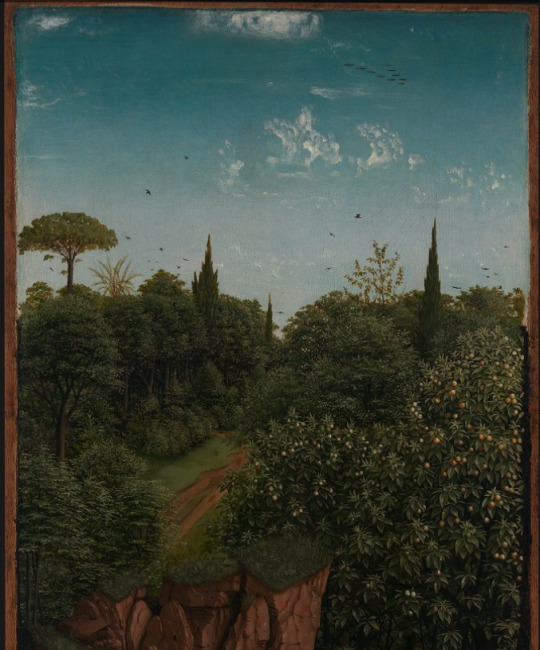



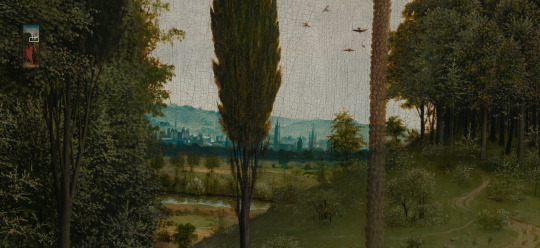
The website Closer to Van Eyck lets you zoom all the way in on Jan & Hubert Van Eyck’s Adoration of the Mystic Lamb altarpiece in Ghent, which is presently being restored (it’s a bit of a work in progress).
Of course, it’s an altarpiece, so the religious iconography is quite literally front and centre. But I rarely look at those bits.
Because there’s a whole world to explore in the details.
these are a few of my favourite bits.
This is the birth of landscape painting right here. In the backgrounds of pious Northern Renaissance pictures of saints.
#painting#van eyck#Ghent altarpiece#northern renaissance#renaissance#belgium#fifteenth century#15th century#art#tiny worlds#details in art
9 notes
·
View notes
Photo
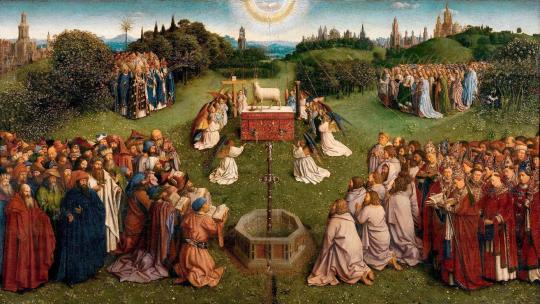
MWW Artist of the Day (5/15/23)
Jan Van Eyck (Flemish, c. 1390-1441)
Adoration of the Mystic Lamb: The Ghent Altarpiece (1432)
Oil on panel, 134.3 x 237.5 cm.
Saint Bavo Cathedral, Ghent
The Ghent Altarpiece or Adoration of the Mystic Lamb is a very large and complex Early Flemish polyptych panel painting which is considered to be one of Belgium's masterpieces and one of the world's treasures. The center panel has as its centerpiece an altar on which a sacrificial lamb is positioned placed in a verdant meadow, while the foreground shows a fountain. Five distinct groups of figures surround altar and fountain. In the mid-ground two further groups figures are seen gathering; the dove of the Holy Spirit is above. The meadow is framed by trees and bushes; with the spires of Jerusalem visible in the background. Dhanens says the panel shows "a magnificent display of unequaled color, a rich panorama of late medieval art and the contemporary world-view."
(Wikipedia extract)
Van Eyck is one of the featured artists in this MWW exhibit/gallery:
https://www.facebook.com/media/set/?set=a.419007544871287&type=3
3 notes
·
View notes
Text
Ghent Altarpiece by Jan van Eyck

Jan van Eyck. Painting Ghent Altarpiece, 1432
The Ghent Altarpiece is a painting by the brilliant Dutch painter Jan van Eyck, commissioned by the generous customer of fine art works, Jos Veidt.
The masterpiece is a folding altar on which the artist reproduced the universal system of the universe in its hierarchy. In it, he illustrated the history of mankind from the fall to salvation.
Read the full article
2 notes
·
View notes
Text
youtube
A 22 minute documentary on the Flemish master Jan van Eyck.
#jan van eyck#van eyck#art#art history#painter#painters#painting#paintings#ghent#gent#bruges#brugge#ghent altarpiece#lam gods#Youtube#vlaanderen#flanders#belgium
1 note
·
View note
Text




Blind and mad with grief, the Prince did not return home, but wandered the earth as a beggar.
Rapunzel in the meantime found herself alone in the desert with nothing but her life and that of the twin children she gave birth to.
-> 🖼
#ts3 rapunzel#sims nfsw#the Ghent altarpiece and a birth#Rapuzel still owns her nightgown but she took it off for the reference and for the birth#I couldn't find a reason to show the Prince undressed#a centuries-old question:#how much nudity can pass on the Ghent altarpiece?
21 notes
·
View notes
Photo
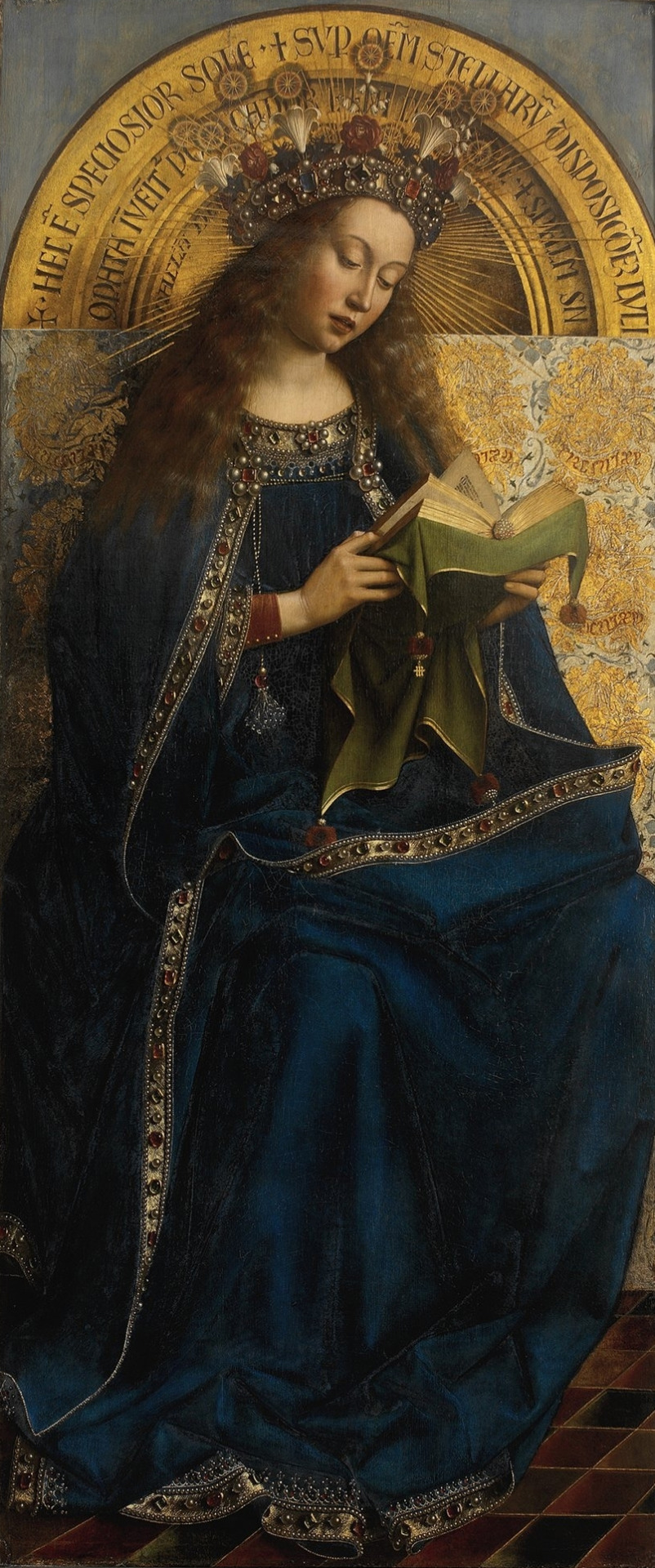
Jan van Eyck (Flemish/Netherlandish, c.1390 - 1441)
The Ghent Altarpiece, c. 1426 - 29
#virgin mary#jan van eyck#the ghent altarpiece#the ghent#art#fine art#christian#Christendom#catholic#christianity#catholicism#oil painting#classical art#europe#european art
586 notes
·
View notes
Photo
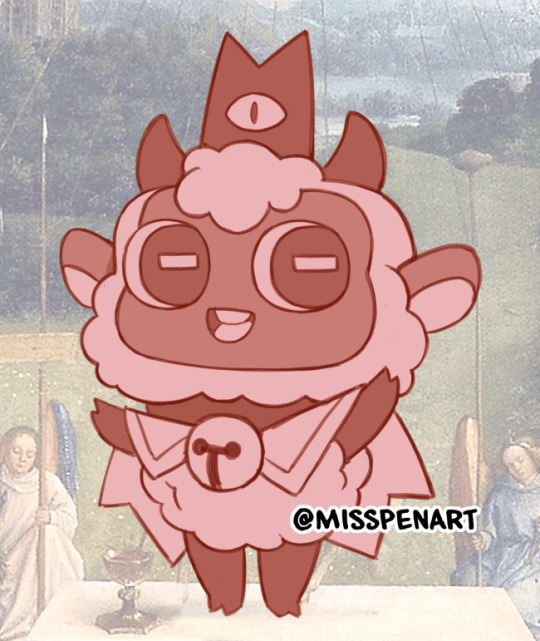
Messing with the Ghent Altarpiece again.
Appropriately, this is my 666th post on Tumblr. Lol.
69 notes
·
View notes
Photo

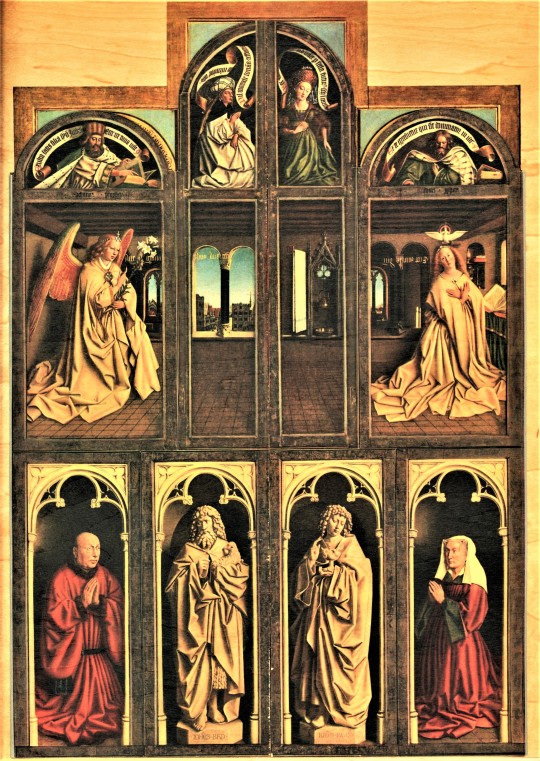

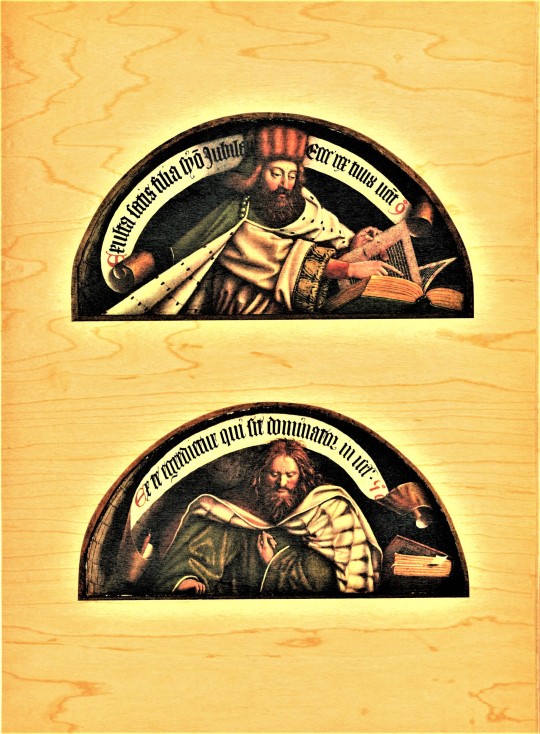



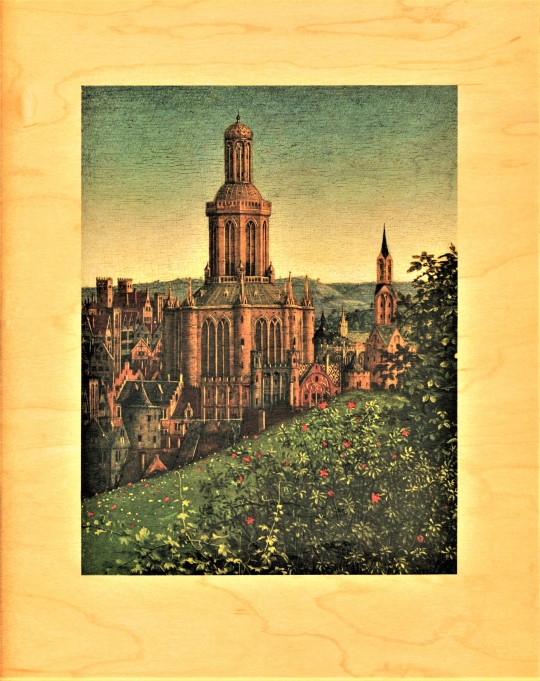


The Adoration of the Mystic Lamb
It has been called the first masterpiece of the Renaissance, the forefather of artistic realism, and the first major oil painting (though that last claim is dubious, since oil paints were in use in Asia as early as the 7th century). In the last five centuries, it has been involved in seven separate thefts and is possibly the most stolen work in art history (the bottom left panel has never been recovered, a reproduction now stands in its place). It’s Jan van Eyck’s Adoration of the Mystic Lamb A.K.A. The Ghent Altarpiece. Rather, it’s the comprehensive treatment of The Adoration of the Mystic Lamb printed and published in 1964 by Arti Grafiche Ricordi of Milan, under the auspices of the Belgian National Commission for UNESCO.
The text is by Valentin Denis, a Belgian professor of Archeology and Art History, and translated into English from the French by Michael Langley. Arti Grafiche Ricordi had also published the original French edition in 1963, as well as an Italian translation the same year. A Dutch-language edition was published in 1964 in Amsterdam by Bonaventura, an imprint of Elsevier (both names an homage to the lauded Dutch House of Elzevir). Despite the change in publisher, the Dutch edition maintains the same design that is consistent across all three of the Ricordi editions. The plates are printed in full-color letterpress halftone on wood veneer laminated to carboard. The first plate is a fold-out triptych, allowing readers to view the entire altarpiece, both open and closed. The following 24 plates focus on the panels, showing individual panels in their entirely and also honing in on details, such as the extreme close up of the background flora and architecture on the upper left corner of the central panel (eighth image above).
Arti Grafiche Ricordi was the graphic design arm of Casa Ricordi, founded in 1808 by the violinist Giovanni Ricordi and predominantly known as a publisher of classical music and opera. The publishing house came to prominence by developing privileged relationships with major 19th-century Italian composers like Rossini, Verdi, and later, Puccini. The firm maintained full family control, with four generations of Ricordi’s at the helm, for over a century, and remains a major name in classical music publishing (now as a subsidiary of Universal Music Group). But Arti Grafiche Ricordi has its own influential past in Italian graphic design. Giulio, the third Ricordi to lead the firm, first bolstered the Officine Grafiche, hiring as the creative director the German Adolfo Hohenstein in 1888. Hohenstein and Officine Grafiche would go on to train the bulk of the first generation of great Italian poster designers.
Find more Decorative Sunday posts here.
-Olivia Hickner, Special Collections Graduate Intern
#Decorative Sunday#Decorative Plates#decorative arts#The Ghent Altarpiece#The Adoration of the Mystic Lamb#Jan van Eyck#Valentin Denis#Arti Grafiche Ricordi#Casa Ricordi#Giovanni Ricordi#Giulio Ricordi#micheal langley#letterpress halftone#Adolfo Hohenstein#oil painting#renaissance art#olivia
34 notes
·
View notes
Text

adoration of the mystic lamb from jan van eyck’s ghent altarpiece
1 note
·
View note